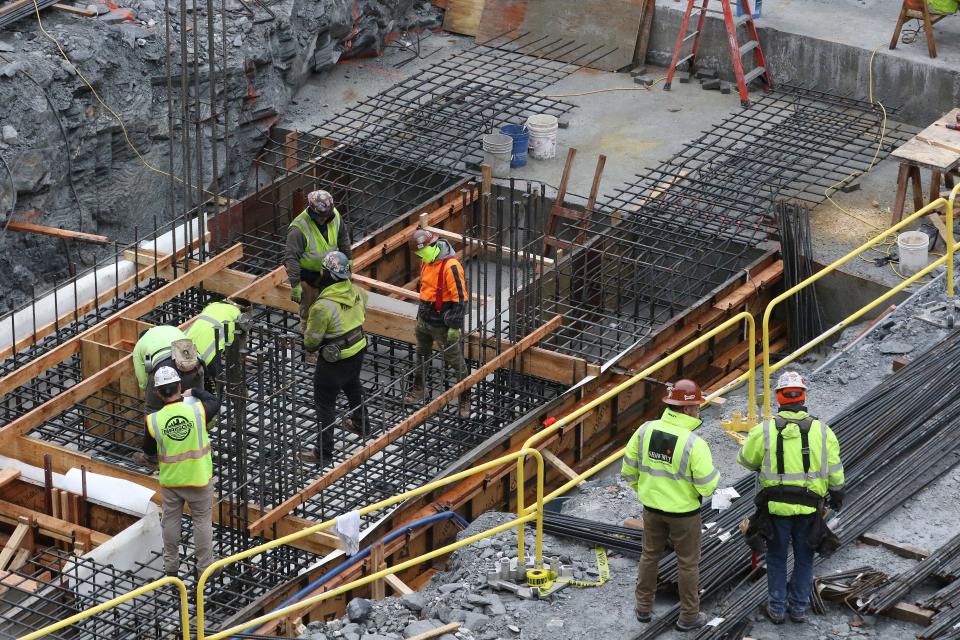New campus construction does more than enhance our education system. Here's how | Opinion
Donato A. Bianco Jr. is the vice president and New England regional manager of the Laborers’ International Union of North America.
As always, September is back to school across Rhode Island. From elementary schools to the campuses of higher education, there is excitement and also a little angst that summer is ending. In many cases, this transition also represents the debut of many new school buildings and investments across local districts and college campuses after the busy summer construction season.
To the students, teachers, professors and the general public, many of this construction activity goes unnoticed until it’s time to walk through the doors and learn. But there is certainly a good story to tell about what these investments not only mean to our education system but to our local communities. Investments that are an engine for family-supporting construction careers.
More: Brown is preparing to open its brand new performing arts center. Here's a look inside
In November 2022, Brown University, a longstanding incubator for jobs and investment into our local economy, took a historic step. The Rhode Island Building & Construction Trades Council (RIBCTC), representing 16 construction craft unions and over 10,000 skilled members in Rhode Island, entered into a landmark five-year agreement with Brown, to commit to employing all-union labor for all campus construction projects over $25 million. Project labor agreements, like the one utilized by Brown University, include provisions for uniform work and schedule conditions to maximize labor related job efficiencies, no labor related delays or work stoppages,and access to highly skilled labor. The University of Rhode Island, Rhode Island College, and Providence College have all used project labor agreements as owners and users of construction services.

For decades, the skilled men and women of the RIBCTC have built Brown’s campus, helping to deliver historic capital investments safely, on time and on budget. Brown University’s capital program infuses hundreds of millions of dollars each year into the local economy. These investments have led to research and job growth, private investment in and around the campus area, and direct local economic spending aiding small business.
Brown doubled-down on their long-term relationship with the building trades by reaffirming a 2012 commitment to guarantee that at least 15% of labor hours worked on these projects are performed by graduates of the Building Futures program. Building Futures is a leading, local non-profit pre-apprenticeship program for members of disadvantaged communities to have the opportunity to earn a pathway to apprenticeships in the union building trades. Apprenticeships are now more important than ever and lead to lifelong careers in the construction industry with family-supporting wages and benefits.
More: Leaders call for developing biotech industry in RI. Here's what they propose
Brown’s commitment to the RIBCTC, Building Futures, and the Ocean State is an exemplar model of a public-private-academic partnership, vital for driving economic growth. And Providence Mayor Brett Smiley’s newly negotiated PILOT agreements with the colleges, including Brown, will drive further investments into the capital city, creating jobs.
From the facilities and capital management team to the leadership of President Christina Paxson and Chancellor Samuel M. Mencoff, Brown University is committed to academic innovation with a responsibility to serve and foster our local community. On behalf of the skilled, hard-working men and women of the building trades, we thank them for their partnership along with the leadership of LIUNA General Secretary-Treasurer and RIBCTC President Michael F. Sabitoni. This leading and prestigious academic institution shares our vision that a robust local economy means ladders of opportunity for all, building the economy from the bottom up and the middle out.
This article originally appeared on The Providence Journal: Much of the construction activity at colleges and universities goes unnoticed until it’s time to walk through the doors and learn.

